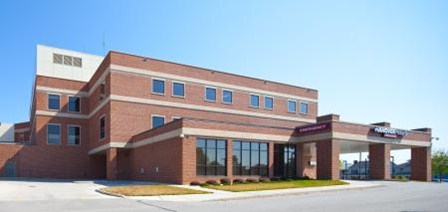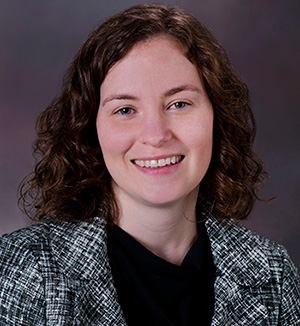Several communities across the country are utilizing the trainings created by the PCSS grant, funded by SAMHSA, and seeing an increase in evidence-based treatment of OUD, increased screening, and increased understanding of the effectiveness of the use of medications for the treatment of substance use disorders. Over the next few weeks, PCSS plans to profile several communities and highlight how PCSS has contributed to positive outcomes at the local level.
 Like many healthcare facilities across the country, Central Peninsula General Hospital, a 40-bed facility, was seeing an influx of opioid-related cases, mostly heroin overdoses, but its providers had little experience treating OUD. Shari Conner, intake specialist at the hospital, contacted PCSS seeking help, and Dr. Weimer took up the challenge. Since her first visit last June, Dr. Weimer has continued to offer guidance to the staff and last month went back to train more clinicians.
Like many healthcare facilities across the country, Central Peninsula General Hospital, a 40-bed facility, was seeing an influx of opioid-related cases, mostly heroin overdoses, but its providers had little experience treating OUD. Shari Conner, intake specialist at the hospital, contacted PCSS seeking help, and Dr. Weimer took up the challenge. Since her first visit last June, Dr. Weimer has continued to offer guidance to the staff and last month went back to train more clinicians.
 Dr. Weimer conducted two trainings—one on evidenced-based opioid prescribing and a MAT (medication assisted treatment) waiver training provided by PCSS. During the course on pain management, Dr. Weimer discussed PCSS’s pain curriculum, which gives practitioners a comprehensive review of evidence-based pain management. Alaska requires that all clinicians receive opioid prescribing training.
Dr. Weimer conducted two trainings—one on evidenced-based opioid prescribing and a MAT (medication assisted treatment) waiver training provided by PCSS. During the course on pain management, Dr. Weimer discussed PCSS’s pain curriculum, which gives practitioners a comprehensive review of evidence-based pain management. Alaska requires that all clinicians receive opioid prescribing training.
When Dr. Weimer first visited Soldatna, AK, a community of just over 4,000, clinicians were struggling with the high number of overdoses. Since her first visit, the healthcare providers “really hit the ground running. They are more open now to the use of buprenorphine and naltrexone.” They’ve come to realize, she said, “that yes, these are essential medications. We see the benefit toward the people who are using it.”
Ms. Conner says the clinicians have learned a great deal since opening the hospital’s detox center last August, adding the PCSS clinical resources have been invaluable. Since then, the center has treated nearly 300 patients, including seven pregnant women (four of whom found out they were pregnant after admission). Many of the patients have pre-existing serious health issues, such as liver damage from hepatitis C, as well as mental illness. Patients typically stay in the detox center for three to seven days before either moving to outpatient care or a residential treatment center also tied to the hospital.
One of the biggest changes, Shari noted, was the reduction of stigma related to treating patients with substance use disorders. “Even if treating addiction is not in your comfort zone, there is someone you can refer your patient to.” Another change? Patients who go in for surgery or who suffer an injury are routinely screened for a substance use problem. In both instances, patient screening was key—and something that was lacking prior to last year. “They learned how to have that conversation with their patients.”
Simply put, Shari says, “It’s working.” The mindset has changed, she says.
Dr. Weimer credits part of the enthusiasm of the staff to a physician assistant, Dale Walaszek, PA, who traveled to New York for some intensive training and returned to Soldatna with knowledge and conviction of treating OUD with medications. Mr. Walaszek saw firsthand the positive results of using medications to treat OUD and is now a vocal advocate for MAT.
Another benefit of her visits to Alaska is what she has seen as a reduction in the stigma within the medical community of treating OUD with medications. Overall, her journey to Alaska has had positive impacts, both on her as a clinician and the small community where the trainings she has provided are making an impact.
“It’s been really nice to make that connection with everyone there and knowing that it matters,” she says.

